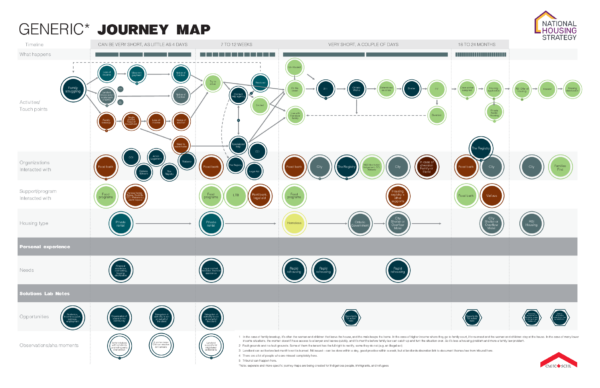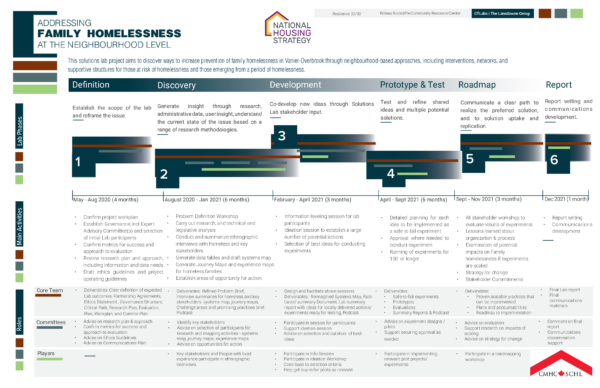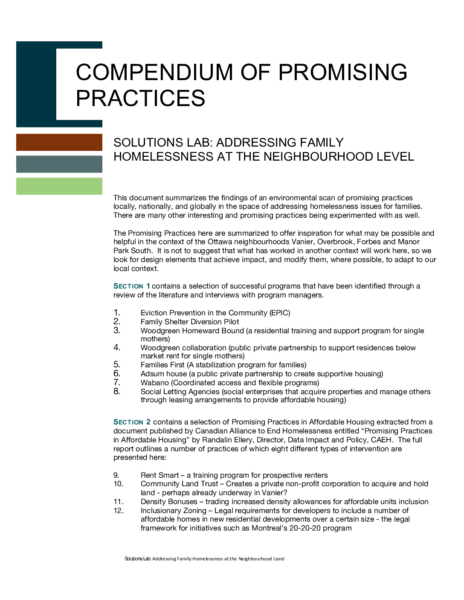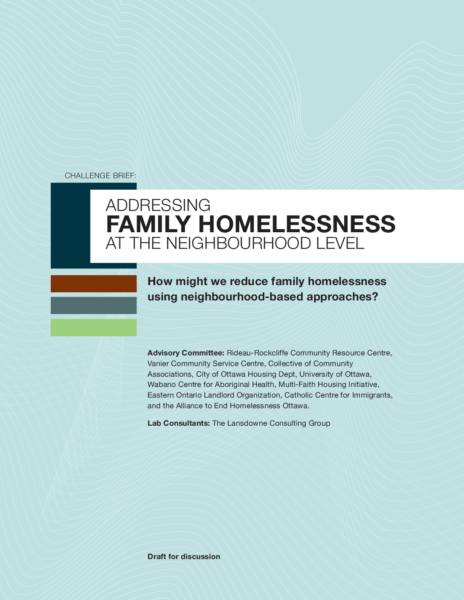What are Solutions Labs?
A “Lab” in this context is an end-to-end process of exploring a challenge, proposing solutions and experimenting with those ideas to see ‘what works’. It’s like a pop-up container and methodology for working together on a people-centred problem over time.
We can all picture a science lab – it’s a place we can do research on scientific questions about how things work, and then run experiments to find solutions to problems – e.g. the discovery of penicillin to kill bacteria, how cancer cells work, or ways that work to edit genomes. In the social sphere, a lab is a process of researching and conducting experiments on social challenges: How can we end human trafficking? How do we transition our supply sustainable society? How do we ensure all Canadians have access to affordable housing?
Jump to:
We are currently supporting Housing Solutions Lab proposals related to Life-stage or Service Transitions, Rural areas, or High poverty areas. Please get in touch.
It’s different than a traditional way of doing things because we create space to blow up problems, assumptions, hierarchies and power structures, find different resources, see things differently, and work across teams, organizations, and sectors. As these challenges are complex, the answers are unclear, we need multiple perspectives and experiences to get closer to the truth of the matter. Our lab needs to have different tools and methods to do effective research and make discoveries, and the time and space to actually conduct experiments. The term “MACRO LABS” refers to longer term processes and experiments on big questions, while “MICRO LABS” are shorter term research and experiments that look at smaller questions, or particular parts of the process (e.g. just unpacking a problem, or only ideating or evaluating), often within the Macro Labs.
We set up and operate Macro and Micro Labs that create spaces to address complex social questions.
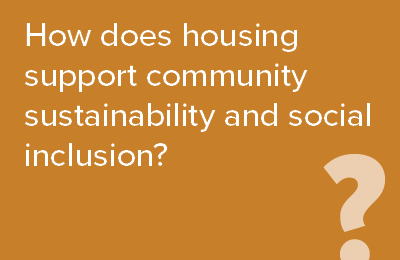



Our Lab Philosophy
We bring a Lab Philosophy of whole-system representation, user-centred design, and solutions ownership to our lab designs.
Whole-System Representation: to find solutions that work in a system, that entire system needs to be somehow represented in the room. We map the system you are working in to see who needs to be engaged.
User-Centred Design: Solutions must centre around the experience of person who is going to be using it / impacted by it.
Solutions Ownership: When we come up with solutions, the people or organizations that would play a key role in actually making it happen – must be in the room. Without their buy-in early on, actual implementation doesn’t generally happen.
Sample Lab Process:

Housing Labs
We co-design and facilitate Solutions Labs with groups, organizations and all levels of government working on the complex challenge of ensuring all Canadians have access to affordable housing.
Sustainability Labs
We power Sustainability Solutions Labs with the science-based framework for strategic sustainable development and the Future-Fit Business Benchmark. This drives robust, meaningful solutions to the global sustainability challenge.
CMHC Family Homelessness Lab
Previous Lab Examples
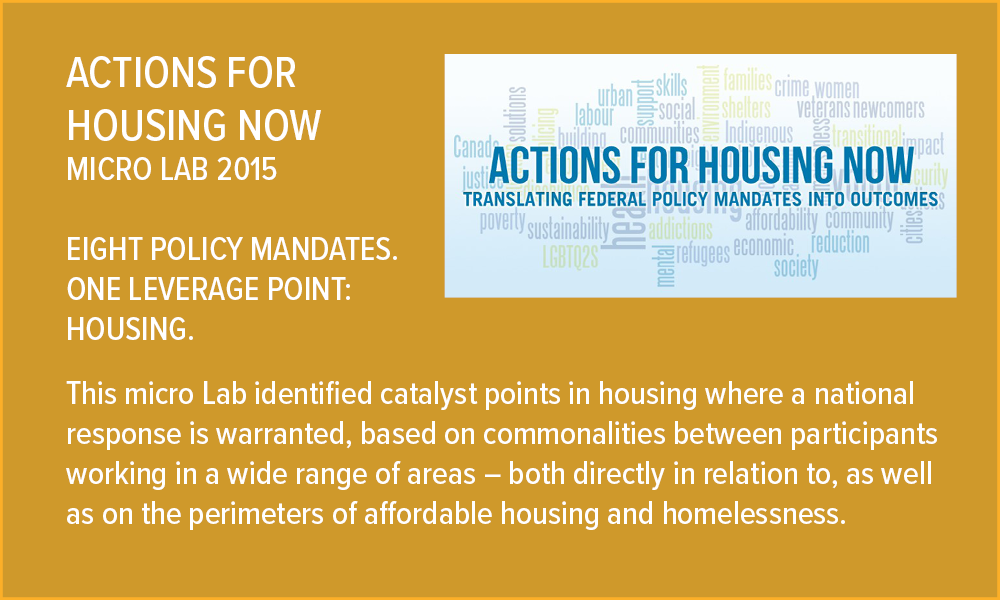
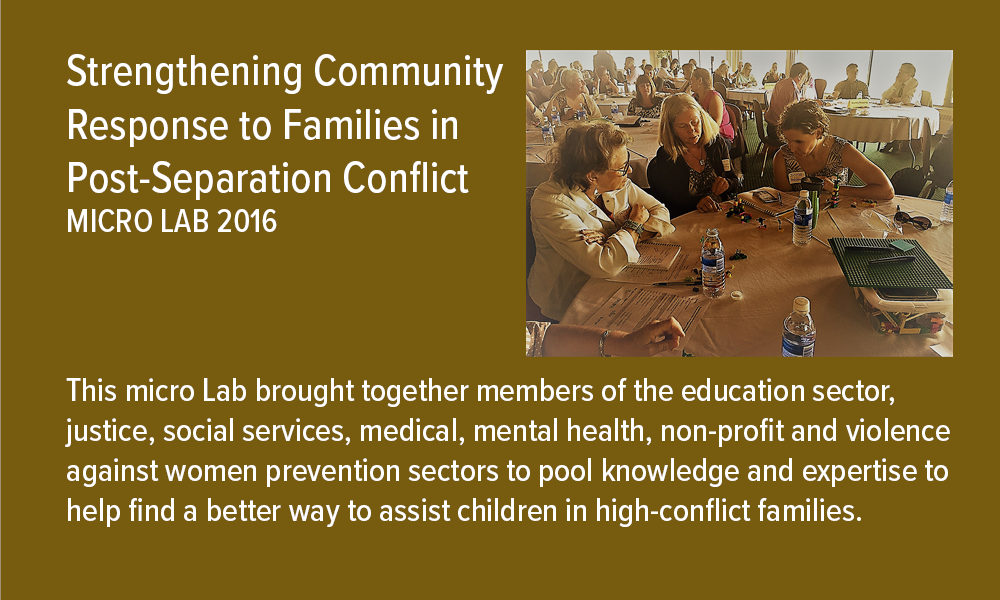
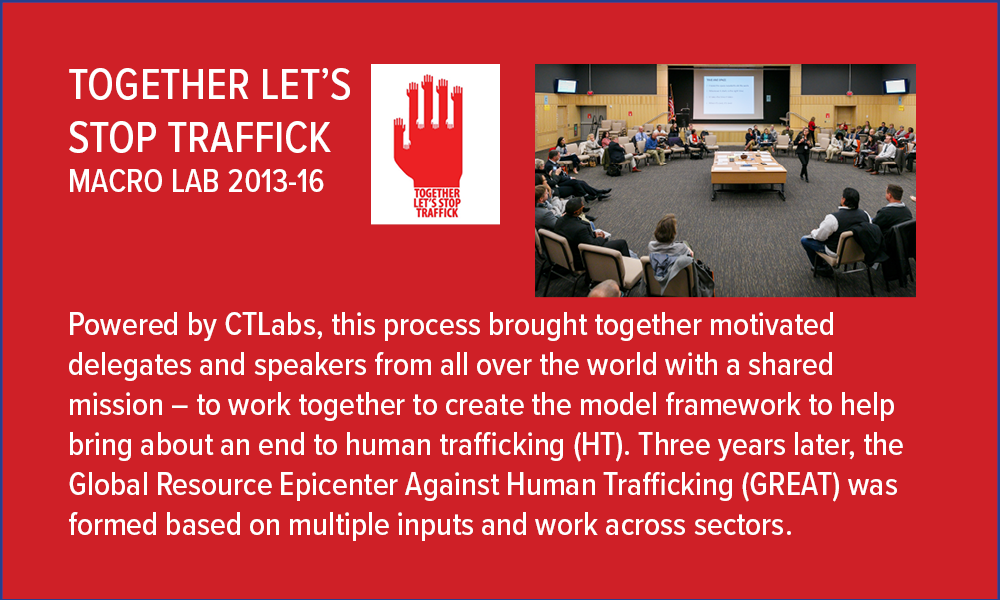
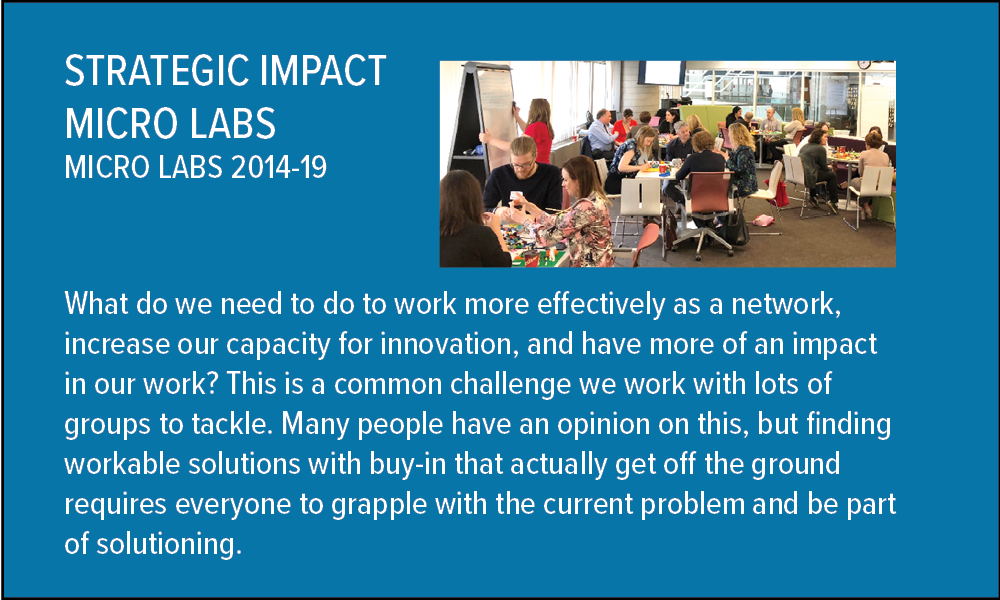
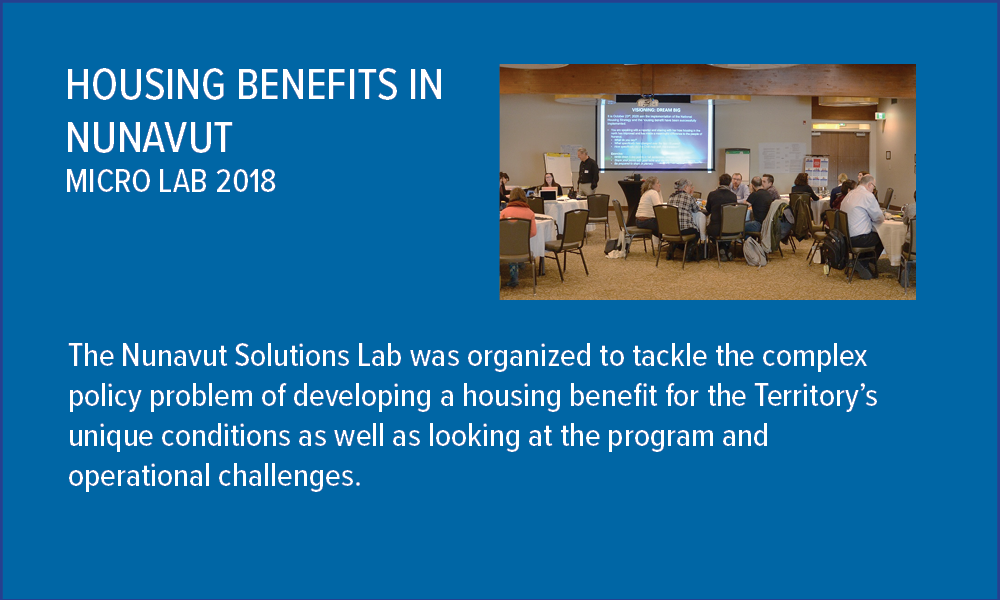

KEY LAB TOOLS WE USE
Our overall toolbox of facilitation tools and methods can be found here. There are a few tools that are very useful in a Lab process specifically:
SenseMaker®
Mass capture of large amounts of narrative data (e.g. tiny stories) self-signified by the teller allows us to unearth patterns and discover insights in a complex system. Learn More
Systems Modelling using LSP
3D models of our system bring everyone onto the same page and make communication and insight generation much more efficient.
Network Mapping
Mapping and visualizing a network is useful for getting everyone on the same page, and better understanding how something (e.g. information, money, influence) flows in a system.
Personas / Journey Mapping
Personas and Journey Maps help us understand the experience of the ‘user’, ‘experienced person’, or target population for a potential solution. This improves design.
Ritual Dissent
This tool is very effective at designing multiple policy responses to a problem and rapidly evaluating them to find something workable.
Rapid Prototyping
When multiple potential solutions exist, we need to find what works, and find it quickly.
